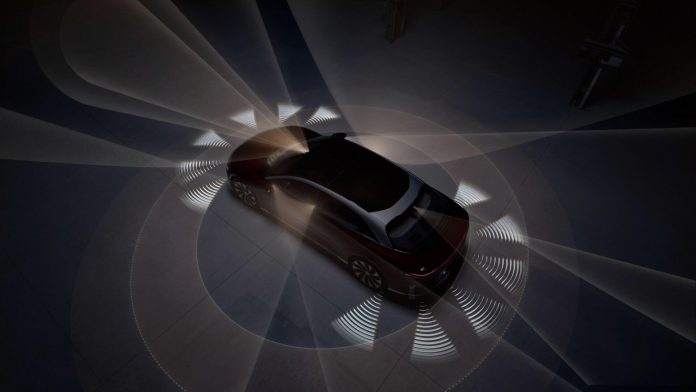The automotive ADAS sensor market is a dynamic and complex ecosystem shaped by technological advances, regulatory changes, consumer preferences, and global economic trends. As vehicles increasingly rely on electronic systems and connectivity, the demand for sensor components has surged, giving rise to a highly competitive and rapidly evolving market. The market is characterized by intense competition among sensor vendors striving to secure contracts with automakers.
Established players, such as Intel, NXP Semiconductors, and Texas Instruments, compete with emerging players and startups that focus on niche technologies. Partnerships and collaborations between sensor companies and automotive OEMs are common strategies to drive innovation and capture market share. The trend of the rise of software-defined technology in the global automotive Advanced Driver Assistance Systems (ADAS) sensor market marks a significant transformation in how the automotive industry approaches developing and deploying safety and assistance features in vehicles.
For years, ADAS systems have primarily relied on specialized sensors, cameras, LiDAR, and radar to perceive the vehicle’s environment and enable critical safety functionalities. However, software-defined ADAS has ushered in a new era of innovation. This approach places a much stronger emphasis on software and data-driven solutions, offering increased adaptability and scalability. It allows for remote updates through over-the-air (OTA) technology, providing the capacity to enhance and expand ADAS capabilities continuously.
This shift toward software-defined ADAS promises greater cost-effectiveness and aligns with the rapid pace of technological advances. It enables vehicles to stay up-to-date with the latest safety features and adapt to ever-changing road conditions and regulations. This trend signifies a significant leap forward in the automotive industry, contributing to the development of safer and more advanced ADAS solutions for vehicles globally.
Radar Sensors to Lead Market, LIDAR Sensors to Surge with Fastest Growth Rate
The global automotive radar sensor market will reach $12.74 billion by 2029, growing at a CAGR of 13.25%. Radar sensors complement other technologies, such as cameras and lidar, to create a comprehensive sensor suite for ADAS and autonomous driving applications. Each type of sensor has its strengths and weaknesses, and combining them provides a more robust and reliable vehicle perception system. Advances in radar sensor technology, including higher resolution, better sensitivity, and improved processing capabilities, contribute to the increased adoption of radar sensors in ADAS applications.
These improvements enhance the performance and reliability of safety systems. As the cost of radar sensors decreases due to technological advances and economies of scale, more automakers can afford to integrate these sensors into a broader range of vehicles. This cost reduction is a key factor in the widespread adoption of radar sensors in the automotive industry.
The ongoing development of autonomous driving technology is a significant driver of the demand for LiDAR sensors. LiDAR plays a crucial role in providing high-resolution, 3D mapping of the vehicle’s surroundings, enabling precise navigation, obstacle detection, and object recognition—key elements for achieving higher levels of automation. LiDAR sensors offer high accuracy and precision in measuring distances and creating detailed 3D maps of the environment. This capability enhances the vehicle’s perception and object recognition abilities, enabling it to detect and respond to various obstacles, pedestrians, and other vehicles with high accuracy. The global automotive LiDAR sensor market is growing at a CAGR of 15.51% during 2023-2029.
APAC Dominating the Market with $14.72 Billion Opportunities by 2029
APAC stands as a cornerstone of the global automotive manufacturing and assembly landscape. With key automotive giants, such as Japan, South Korea, and China, the region produces a significant portion of the world’s vehicles. The integration of automotive ADAS sensors has been pivotal in enhancing the performance, safety, and features of these vehicles.
Connected vehicles and advanced infotainment systems are sought after by consumers in APAC. These systems provide seamless integration with smartphones, navigation, entertainment, and internet services—all of which rely on semiconductor technologies. APAC boosts a robust semiconductor supply chain, with various countries contributing to the manufacturing and producing these critical components. This availability of semiconductors supports the growth of the automotive industry in the region.
Beyond the major automotive markets in China, Japan, and South Korea, emerging economies in APAC, such as India, have experienced growth in automotive manufacturing and sales. As these markets mature, the demand for vehicle ADAS sensors will increase. Rapid urbanization in many APAC cities has led to traffic congestion and pollution. This has spurred interest in smart mobility solutions, electric vehicles, and shared transportation, all of which rely on semiconductor technologies.
However, developing new applications for ADAS sensors is another opportunity for the APAC market. ADAS sensors could be used for various applications, such as parking assistance, lane departure warning, and traffic jam assistance. The growing demand for safety is an ongoing opportunity for the APAC market. As consumers become more aware of the safety benefits of ADAS, they are likely to continue to demand that these systems be included in new vehicles.
Therefore, the APAC market for automotive ADAS sensors is expected to be a significant growth market. The increasing demand for ADAS, the growing adoption of EVs, and the growing demand for safety are all driving the growth of the market. However, there are also some challenges that the market will need to address, such as the high cost of ADAS sensors, the lack of standardized regulations, and the high level of competition. Despite these challenges, the automotive ADAS sensors in APAC are expected to be a profitable and growing market.

